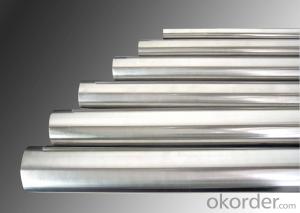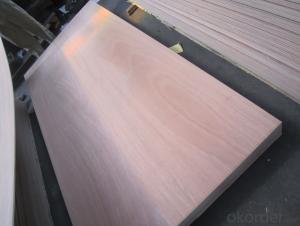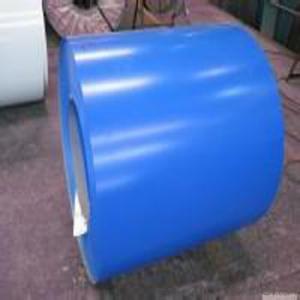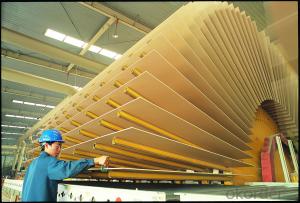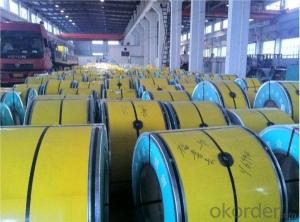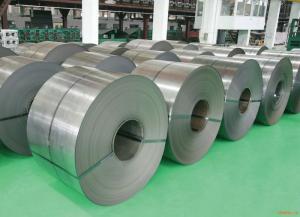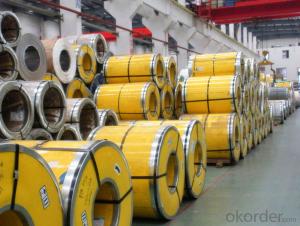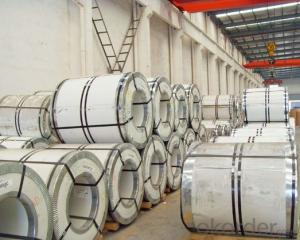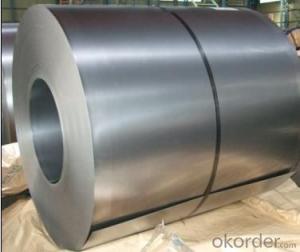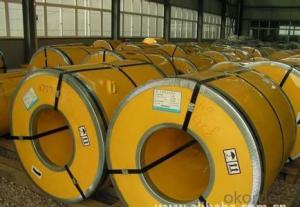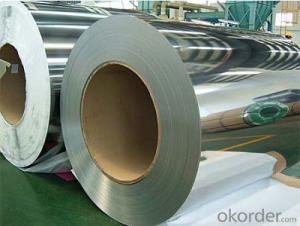Thin Stainless Steel Sheets
Thin Stainless Steel Sheets Related Searches
Best Paint For Stainless Steel Blanket Insulation For Steel Buildings Primer For Galvanized Steel Foam Filter For Stainless Steel H S Code For Stainless Steel Surface Grinding Wheels For Stainless Steel Surface Grinding Wheels For Hardened Steel Hole Saw For Stainless Steel Paint For Stainless Steel Stainless Steel For BbqHot Searches
Steel Mesh Panels For Sale Price For Stainless Steel Scrap Scrap Price For Stainless Steel Price For Stainless Steel Stainless Steel Tank For Sale Stainless Steel Sheets For Sale Cheap High Tea Sets For Sale Stainless Steel Tanks For Sale Stainless Steel For Sale High Density Fiberboard For Sale Solar Hot Water Collectors For Sale Scaffolding For Sale In Uae Scaffolding For Sale In Ireland Scaffolding For Sale In Houston Type Of Inverter For Solar Price Of Shipping Containers For Sale Types Of Inverter For Solar Stock Price For Aluminum Used Solar Inverter For Sale Steel Mesh Panels For SaleThin Stainless Steel Sheets Supplier & Manufacturer from China
Okorder.com is a professional Thin Stainless Steel Sheets supplier & manufacturer, offers integrated one-stop services including real-time quoting and online cargo tracking. We are funded by CNBM Group, a Fortune 500 enterprise and the largest Thin Stainless Steel Sheets firm in China.Hot Products
FAQ
- Yes, stainless steel strips are suitable for cryogenic storage. Stainless steel is known for its excellent strength, durability, and resistance to corrosion, making it an ideal material for cryogenic applications. Cryogenic storage involves extremely low temperatures, typically below -150 degrees Celsius (-238 degrees Fahrenheit), and stainless steel can withstand these extreme conditions without losing its structural integrity. Additionally, stainless steel has low thermal conductivity, which helps to minimize heat transfer and maintain the desired temperature within the cryogenic storage system. It is important to choose the appropriate grade of stainless steel for cryogenic storage to ensure it meets the required specifications and can withstand the specific conditions of the application.
- Due to their exceptional properties, stainless steel strips find wide usage in the oil and gas pipeline industry. They offer various benefits in different applications, such as: 1. Corrosion resistance: Stainless steel's ability to withstand corrosion makes it a suitable material for oil and gas pipelines. It effectively protects the pipelines from degradation caused by corrosive fluids like crude oil, natural gas, and various chemicals, thereby extending their lifespan. 2. Strength and durability: With their high tensile strength and excellent toughness, stainless steel strips can endure the high pressure and extreme temperatures commonly encountered in the oil and gas industry. They provide structural integrity to the pipelines, ensuring the safe and reliable transportation of fluids. 3. Weldability: Stainless steel strips possess excellent weldability, allowing for efficient fabrication and installation of pipelines. They can be easily welded to form joints and connections without compromising the pipeline system's integrity. 4. Hygiene and cleanliness: The non-porous and smooth surface of stainless steel makes it suitable for pipelines that require strict hygiene standards. It prevents the accumulation of bacteria, contaminants, and impurities, ensuring the purity of the transported fluids. 5. Resistance to high temperatures: Stainless steel strips retain their strength and structural integrity even when exposed to high temperatures. This property is crucial in the oil and gas industry, where pipelines often transport hot oil or gas. 6. Maintenance and cost-effectiveness: Due to their corrosion resistance and durability, stainless steel strips require minimal maintenance. This reduces the need for frequent repairs and replacements, resulting in cost savings for pipeline operators. In summary, stainless steel strips are essential in the oil and gas pipeline industry due to their corrosion resistance, strength, durability, weldability, hygiene, thermal resistance, and cost-effectiveness. These properties make them the preferred choice for ensuring the efficient and safe transportation of oil and gas products.
- Stainless steel strips have a variety of common uses in the semiconductor industry due to their unique characteristics and properties. Some of the major applications include: 1. Etching Process: Stainless steel strips are often utilized as etching masks during the semiconductor fabrication process. The strips are resistant to various chemical etchants and offer excellent corrosion resistance, making them ideal for protecting specific areas of the semiconductor surface during the etching process. 2. Wafer Handling: Stainless steel strips are used for handling delicate silicon wafers throughout the manufacturing process. The strips provide a clean and contamination-free surface, preventing any damage or contamination that could affect the quality of the wafers. 3. Cleanroom Construction: Stainless steel strips are commonly used in the construction of cleanrooms within the semiconductor industry. These strips are preferred due to their high resistance to corrosion, durability, and ability to withstand harsh cleaning chemicals used in cleanroom maintenance. 4. ESD Protection: Electrostatic discharge (ESD) can cause significant damage to sensitive semiconductor components. Stainless steel strips are used as grounding strips or ESD protection strips to dissipate any static charges and prevent damage to the semiconductor devices during the assembly and testing processes. 5. Heat Exchangers: Stainless steel strips are employed in the construction of heat exchangers used to regulate temperature during various semiconductor manufacturing processes. The strips' excellent thermal conductivity and corrosion resistance make them suitable for transferring heat efficiently while maintaining a clean and sterile environment. 6. Surface Mount Technology (SMT): Stainless steel strips are also used in the SMT process, where electronic components are directly mounted onto the surface of a printed circuit board. The strips serve as solder stencils, facilitating the precise application of solder paste onto the board, ensuring accurate placement of components during the assembly process. Overall, stainless steel strips are valued in the semiconductor industry for their corrosion resistance, cleanliness, durability, and ability to withstand extreme conditions, making them indispensable in various stages of semiconductor manufacturing.
- There are several different types of surface treatments available for stainless steel strips, each with its own unique benefits and applications. Some of the most common surface treatments include: 1. Polishing: This treatment involves mechanically smoothing the surface of the stainless steel strip to create a high-gloss finish. Polishing not only enhances the aesthetic appearance but also improves corrosion resistance and makes the surface easier to clean. 2. Brushing: Brushing involves rubbing the stainless steel strip with an abrasive material to create a brushed texture. This treatment gives the steel a distinctive linear pattern and can hide scratches and fingerprints, making it ideal for applications where a matte or satin finish is desired. 3. Passivation: Passivation is a chemical treatment that removes iron contaminants from the surface of stainless steel, enhancing its corrosion resistance. This process involves immersing the steel strip in an acid solution to remove impurities and create a passive oxide layer that protects the surface from rust and other forms of corrosion. 4. Electropolishing: Similar to polishing, electropolishing is an electrochemical process that removes a thin layer of material from the stainless steel strip. This treatment smooths the surface, reduces surface roughness, and improves the cleanliness and corrosion resistance of the steel. 5. PVD Coating: Physical Vapor Deposition (PVD) coating is a thin film deposition process that involves depositing a thin layer of material onto the stainless steel strip's surface. This treatment can provide a range of decorative and functional coatings, such as gold, black, or colored finishes, as well as enhanced hardness or wear resistance. 6. Chemical Etching: Chemical etching is a technique that uses chemicals to selectively remove material from the stainless steel strip's surface. This treatment allows for the creation of intricate designs or patterns on the steel and is commonly used for branding or decorative purposes. 7. Powder Coating: Powder coating involves applying a dry powder onto the stainless steel strip's surface and then heating it to form a protective layer. This treatment provides excellent corrosion resistance, durability, and can be customized with different colors or textures. It is important to consider the specific requirements and intended use of the stainless steel strip when selecting a surface treatment, as each treatment offers different properties and finishes that can enhance the overall performance and appearance of the steel.
- Stainless steel strips are widely used in the food manufacturing process due to their unique properties and hygienic nature. Some common uses of stainless steel strips in the food manufacturing process include: 1. Conveyor Belts: Stainless steel strips are commonly used as conveyor belts in food processing plants. These strips are resistant to corrosion and can withstand high temperatures, making them suitable for transporting food items through various stages of production. 2. Food Processing Equipment: Stainless steel strips are used to construct equipment such as mixers, blenders, grinders, and slicers. The high strength and durability of stainless steel strips ensure that these equipment can withstand the rigorous demands of food processing, while also maintaining a clean and hygienic surface. 3. Food Storage and Handling: Stainless steel strips are used to construct storage containers, shelves, and racks in food manufacturing facilities. The non-reactive nature of stainless steel ensures that it does not contaminate the food products, maintaining their quality and safety. 4. Food Packaging: Stainless steel strips are used in the production of food packaging materials, such as cans, trays, and lids. These strips provide a strong and durable packaging solution, protecting the food from external contaminants and ensuring its freshness and longevity. 5. Heat Exchangers: Stainless steel strips are utilized in the construction of heat exchangers, which play a crucial role in the food manufacturing process. Heat exchangers help in heating or cooling food products, maintaining the desired temperature for processing, pasteurization, or storage. 6. Sanitary Fittings: Stainless steel strips are used to fabricate sanitary fittings like pipes, valves, and connectors. These fittings are essential for maintaining a hygienic environment in food processing facilities, as stainless steel is easy to clean, resistant to bacterial growth, and does not contaminate the food products. Overall, the common uses of stainless steel strips in the food manufacturing process revolve around their corrosion resistance, durability, cleanliness, and ability to maintain food quality and safety.
- Yes, stainless steel strips can be used in electronic applications. They are commonly used as connectors, terminals, and shielding materials in various electronic devices and components due to their excellent conductivity, corrosion resistance, and mechanical strength.
- Stainless steel strips are commonly used in various applications within the automotive manufacturing process. One of the primary uses is in the production of automotive components and parts. These strips are often utilized to fabricate body panels, trim, moldings, and other exterior features of vehicles. The corrosion-resistant properties of stainless steel make it an ideal material for automotive applications, as it can withstand exposure to harsh weather conditions and road salts without rusting or deteriorating. Additionally, stainless steel strips offer excellent strength and durability, ensuring the longevity of automotive components. Another common use of stainless steel strips in automotive manufacturing is in the production of exhaust systems. Stainless steel strips are widely employed in the fabrication of exhaust pipes, mufflers, and catalytic converters due to their ability to withstand high temperatures and corrosive gases emitted from the engine. The heat resistance and anti-corrosive nature of stainless steel ensure that these components maintain their performance and structural integrity over time. Furthermore, stainless steel strips find applications in the manufacture of fuel tanks, brackets, fasteners, and other critical automotive parts. These strips provide the necessary strength, resistance to vibration, and durability required in such components, ensuring the safety and reliability of the vehicles. In summary, stainless steel strips have several common uses in the automotive manufacturing process. From body panels and trim to exhaust systems and critical components, stainless steel's corrosion resistance, strength, and durability make it a preferred material choice in the automotive industry.
- Architectural column systems can indeed utilize stainless steel strips. With its versatility, stainless steel provides numerous advantages for architectural applications. It boasts durability, resistance to corrosion, and a sleek, modern appearance, making it an optimal selection for column systems in buildings. To achieve an aesthetically pleasing and contemporary look, stainless steel strips can be employed to fashion decorative cladding or coverings for columns. These strips easily conform to the design specifications of the column system, allowing for customized and unique architectural features. Aside from its visual appeal, stainless steel also possesses strength and longevity. It can endure diverse environmental conditions, such as extreme temperatures, moisture, and UV exposure, without succumbing to rust or deterioration. Consequently, stainless steel strips represent a dependable and low-maintenance choice for architectural column systems, ensuring their durability and longevity. Moreover, stainless steel aligns with the growing trend of incorporating sustainable and eco-friendly materials in architectural designs. As a fully recyclable material, it can be repurposed or reused after fulfilling its initial purpose. Ultimately, stainless steel strips prove to be a suitable option for architectural column systems due to their corrosion resistance, durability, aesthetic appeal, and sustainability. Architects and designers can confidently rely on stainless steel strips to enhance the visual appearance and structural integrity of their column systems in various architectural projects.

















